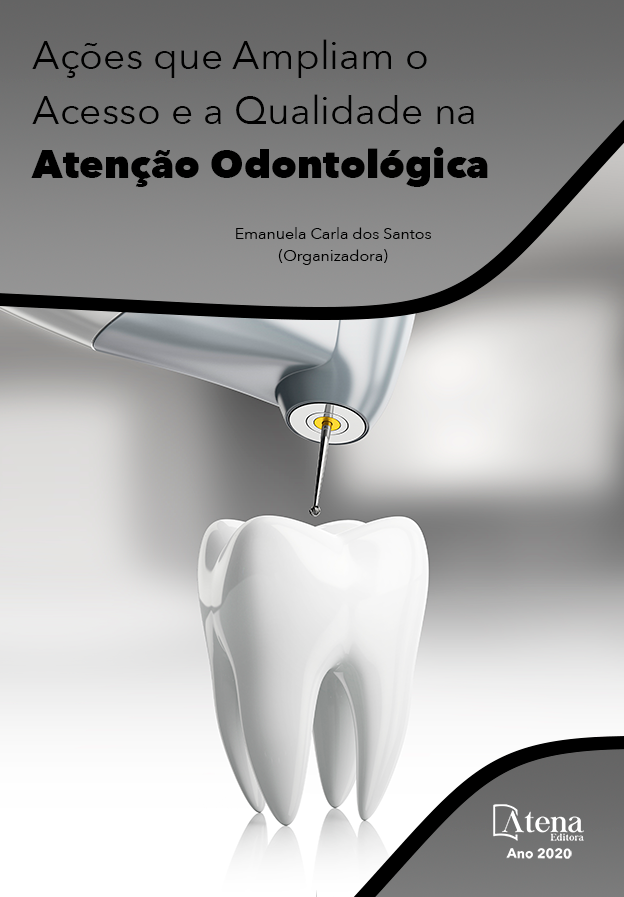
PREVENÇÃO E TRATAMENTO DA MUCOSITE ORAL EM PACIENTES COM CÂNCER DE CABEÇA E PESCOÇO
A mucosite oral (MO) é considerada uma das manifestações bucais mais frequentes em pacientes sob quimioterapia e/ou radioterapia em cabeça e pescoço. O emprego do laser de baixa intensidade oferece comprovado efeito de diminuição da dor e aceleração do processo de cicatrização, sendo a aplicação bem tolerada pelos pacientes e, empregado de forma adequada, não apresenta efeitos adversos. O objetivo deste estudo foi avaliar o uso da aplicação profilática e terapêutica do laser de baixa intensidade sobre a mucosa oral em pacientes portadores de neoplasia maligna em região de cabeça e pescoço submetidos ao tratamento radioterápico. Foram avaliados vinte e quatro pacientes, os quais receberam laser com comprimento de onda de 660 nm, vermelho, potência de 100 mW, frequência de modo contínuo, modo de aplicação pontual e energia de 2 Joules por ponto. A fotobiomodulação foi realizada três vezes por semana durante todo o tratamento radioterápico. Quanto ao maior grau de MO apresentado, foi observado que 41,7% dos pacientes não desenvolveram MO em nenhum momento do tratamento. MO grau 1 foi observada em 25% dos participantes, e grau 2 em 33,3%. Os graus 3 e 4 de MO não foram observados em nenhum paciente. Quanto ao grau de MO que o paciente apresentou durante o maior tempo do tratamento, foi verificado que 79,2% dos participantes mantiveram-se com grau 0. 12,5% dos pacientes apresentaram grau 1 na maior parte do tratamento, e grau 2 foi verificado em 8,3%. A técnica de radioterapia 3D se mostrou mais favorável, no sentido de gerar menor incidência e severidade de MO entre os pacientes tratados com esta técnica. Baseado nos dados apresentados pode-se sugerir que há um efeito benéfico da fotobiomodulação durante o tratamento radioterápico, pois o laser atuou minimizando a ocorrência e controlando a severidade da MO.
PREVENÇÃO E TRATAMENTO DA MUCOSITE ORAL EM PACIENTES COM CÂNCER DE CABEÇA E PESCOÇO
-
DOI: 10.22533/at.ed.45720031118
-
Palavras-chave: Mucosite oral; Radioterapia; Laser de baixa intensidade; Oncologia.
-
Keywords: Oral mucositis; Radiotherapy; Low intensity laser; Oncology
-
Abstract:
Oral mucositis (OM) is considered one of the most common oral manifestations in patients undergoing chemotherapy and/or radiotherapy in the head and neck. The use of the low intensity laser offers a proven effect of reducing pain and accelerating the healing process, and the application is well tolerated by the patients and, when properly employed, has no adverse effects. The aim of this study was to evaluate the use of prophylactic and therapeutic low intensity laser on the oral mucosa in patients with malignant neoplasia in the head and neck region under radiotherapy treatment. Twenty-four patients were evaluated, who received laser with 660 nm wavelength, red, 100 mW of power, continuous mode frequency, punctual application mode and energy of 2 Joules per point. Photobiomodulation was performed three times a week throughout the entire radiotherapy treatment. Regarding the higher degree of OM presented, it was observed that 41.7% of the patients did not develop OM at any time of the treatment. Grade 1 mucositis was observed in 25% of the participants, and grade 2 in 33.3%. Grades 3 and 4 of OM were not observed in any patient. Regarding the degree of OM that the patient presented during most of the time throughout the treatment, it was verified that 79.2% of the participants remained with grade 0. 12.5% of the patients presented degree 1 in most part of the treatment, and grade 2 was verified in 8.3%. The 3D radiotherapy technique was more favorable, in the sense of generating a lower incidence and severity of OM among the patients treated with this technique. Based on these results, It can be suggested that there is a beneficial effect of the photobiomodulation during the ridiotherapy treatment, since the laser acted minimizing the occurrence and controlling the OM severity.
-
Número de páginas: 15
- Jair Carneiro Leão
- Igor Henrique Morais Silva
- Yuri Victor Siqueira Muniz
- Raíssa Soares dos Anjos
- Ana Waleska Pessoa Barros
- Maria Fernanda Limeira Feitosa
- Marcos Antonio Pachêco Silva Filho
- Válery Muniz de Sousa
- Ana Maria Ipólito Barros
- Raylane Farias de Albuquerque
- Lucas Nascimento Ribeiro


